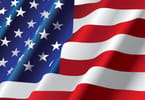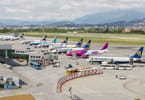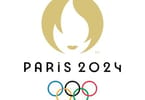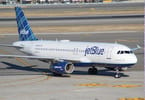Total expenditures by visitors who came to Hawaii by air in March 2010 rose 12.7 percent from the same month last year to US$874.2 million, boosted by increased arrivals and higher daily visitor spending, according to preliminary statistics released today by the Hawaii Tourism Authority (HTA).
For the first quarter of 2010, total spending by air visitors grew by US$130.1 million to US$2.7 billion, or 5 percent higher compared to year-to-date 2009.
Among the major islands, Maui led the growth in visitor spending (+25.2 percent, to US$257.7 million), and arrivals (+14.2 percent). Contributing to these strong gains were new air services added in March 2010 to Maui from Edmonton, Calgary, Orange County, Los Angeles, San Jose, and Sacramento and new routes to Maui that began in late 2009.
In total, there were 607,709 air and cruise visitors in March 2010, up 9.3 percent from last March. All top four visitor markets showed gains in arrivals by air compared to March 2009: Canada (+17.3 percent), US West (+9.2 percent), US East (+7.9 percent) and Japan (+6.5 percent).
Additional Total Air Visitor Highlights:
• The 12.7 percent growth in total expenditure for the month of March 2010 was the largest since April 2006 (+15.6 percent). Contributing to this increase was a 10.2 percent growth in arrivals by air to 596,969 visitors and higher average daily spending (US$164 per person compared to US$158 per person in March 2009).
• For the first quarter of 2010, total visitor days by air and cruise visitors increased 4.3 percent, while total arrivals rose 4.1 percent from the same period last year to 1,671,540 visitors.
• The Easter holiday was in the first week of April 2010, so visitors who came for Spring Break came in March contributing to the increased in visitors to the state.
• The total number of independent travelers in March 2010 rose 11.1 percent compared to last March. Significantly more Japanese visitors traveled independently (+30.9 percent), while independent travelers from the US West (+9.7 percent), US East (+7.5 percent), and Canada (+11.7 percent) also increased.
• The total number of visitors who came to honeymoon in March 2010 rose 7.9 percent compared to a year ago with growth from Japan (+1.6 percent), Canada (+55.3 percent), and other visitors (+60.8 percent). Total honeymoon visitors have continued to increase since October 2009.
• Significantly more Japanese (+32.3 percent) and Canadian (+182.7 percent) visitors came to get married in March 2010, boosting the total number of get-married visitors by 19.3 percent from March 2009.
• Fewer total visitors came for conventions (-13.3 percent) in March 2010 as growth in conventioneers from Japan (+41.2 percent) were offset by decreases from US West (-10.8 percent), US East (-13.3 percent), and Canada (-40.6 percent).
• All accommodations benefitted from increased total visitor traffic during the month of March 2010 including hotels (+13.1 percent), condominium properties (+10.8 percent), timeshare (+4.1 percent), friends/relatives (+2.9 percent), and bed and breakfast properties (+5.2 percent).
Major Marketing Areas: US West:
• Growth in visitor arrivals (+9.2 percent) and higher average daily spending (US$139 per person, from US$133 per person in March 2009) elevated total spending by US West visitors (+12.8 percent) to US$291.6 million for the month of March 2010.
• In March 2010, arrivals from the Pacific region rose 10.2 percent with increases from California (+13.4 percent), Alaska (+8.1 percent), Oregon (+6.9 percent), and Washington (+4.8 percent). Arrivals from the Mountain region were also higher (+5.6 percent) compared to last March.
• For the first quarter of 2010, total expenditures by US West visitors grew 5.8 percent to US$873.2 million. Total visitors days (+3.1 percent) and visitor arrivals (+3.1 percent) were up for April 27, 2010
US East:
• Total spending from US East visitors in March 2010 rose 12.1 percent to US$224.7 million, thanks to increases in arrivals (+7.9 percent) and average daily spending (US$158 per person, compared to US$150 per person in March 2009).
• Arrivals from the top US East regions of East North Central (+6.3 percent) rose compared to March 2009, while the South Atlantic (+15.2 percent) led by growth from Virginia (+18.6 percent) also increased. Arrivals from Middle Atlantic (+23.5 percent) – particular New Jersey (+34.4 percent) and New York (+24.9 percent) – rose by double digits. Arrivals from the West North Central (+7.7 percent) region were also higher compared to last March.
• However, for the first quarter of 2010, arrivals from the East South Central (-9.8 percent), New England (-5.9 percent) and East North Central (-2.2 percent) showed declines compared to first quarter 2009.
Japan:
• Much of the growth in Japanese arrivals in March 2010 continued to be from Net True Independent (FIT) travelers which climbed 30.9 percent from last March. This was the ninth consecutive month of increased growth since July 2009.
• Despite the 6.5 percent growth in arrivals, total expenditures by Japanese visitors fell 3 percent to US$155.5 million in March 2010. The decline was largely due to a lower daily spending by these visitors (US$244 per person) compared to US$268 per person in March 2009. A higher proportion of FIT visitors, which generally had a lower daily spending, contributed to this decrease.
• For the first quarter of 2010, total spending by Japanese visitors dropped 10.6 percent to US$429 million. Average daily spending was US$254 per person, down from US$291 per person in the first quarter of 2009. Japanese visitor arrivals grew 3 percent.
• Significantly more Japanese visitors in the first quarter of 2010 stayed in timeshare properties (+47.8 percent) and more also stayed in condominium properties (+9.9 percent) compared to the same period last year.
Canada:
• The 17.3 percent increase in Canadian arrivals for March 2010 was the third month of consecutive double digit increases for this market. February through August 2008 was the last time that growth in Canadian arrivals was so strong.
• Strong growth in visitor arrivals boosted total spending by Canadian visitors (+7.1 percent) to US$81.8 million in March 2010 even though daily spending by these visitors were lower (US$132 per person) compared to March 2009 (US$138 per person).
• For the first quarter of 2010, total spending by visitors from Canada increased 15.7 percent to US$282.9 million thanks to a 17.1 percent growth in visitor arrivals.
• All visitor accommodations saw much heavier traffic from Canadian visitors, especially condominium properties which jumped 20.1 percent from first quarter 2009. Hotels
You may find details at http:// www.hawaiitourismauthority.org/reports .
Mike McCartney, president and CEO of the Hawaii Tourism Authority made this statement:
“We are on target with the goals in HTA’s Strategic Plan and are pleased with the way the numbers have been trending throughout the first quarter of 2010. The Neighbor Islands, and particularly Maui, are seeing increased activity as a result of increased direct flights and air seats from regional airports on the West Coast and Canada.
“We also are seeing substantial gains in international markets especially from Korea. As expected, pent up demand, a rebounding economy, the Visa Waiver program, and aggressive leisure and business marketing efforts have contributed to a doubling of visitors from this market over the same time last year. The Korea market also supports HTA’s emphasis on increasing visitor expenditures, with per-person-per-day spending at US$238.
“West Coast arrivals are also up from key cities with direct flight access where HTA and HVCB have targeted recent blitzes including Los Angeles, San Francisco, and Seattle.
“Even with these positive indicators, we are mindful that we are coming off an especially depressed 2009, and it is important that we sustain momentum and these positive trends. This is especially critical during the slower months of April and May. We cannot let up and must continue to work even harder to drive demand to fill the additional seats we have attracted into the market, and we need to pay attention to factors such as currency exchange rates and oil prices, which directly affect people’s ability and decision to travel to Hawaii.
“Consistent with our plan and HTA’s strategic roles, we are being vigilant and strategic with our marketing funds and have compelling programs and events in place to help bolster arrivals in the short-term. Programs include Mahalo Month for travel professionals, targeting Hawaii-selling agents; the Nā Hōkū O Hawaii Music Festival; and Maoli Arts Month.”
WHAT TO TAKE AWAY FROM THIS ARTICLE:
- • The Easter holiday was in the first week of April 2010, so visitors who came for Spring Break came in March contributing to the increased in visitors to the state.
- 2 percent growth in arrivals by air to 596,969 visitors and higher average daily spending (US$164 per person compared to US$158 per person in March 2009).
- Contributing to these strong gains were new air services added in March 2010 to Maui from Edmonton, Calgary, Orange County, Los Angeles, San Jose, and Sacramento and new routes to Maui that began in late 2009.



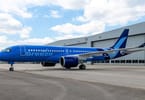

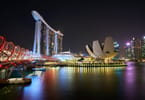

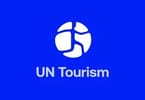
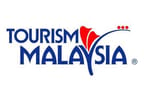





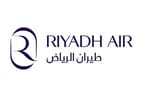
![China's Hyperloop Train: A Glimpse into the Future of Transportation 13 Travel Tourism News | Domestic & International Hyperloop Train China [Photo: Hyperloop Transportation Technologies]](/cdn-cgi/image/width=145,height=100,fit=crop,quality=80,format=auto,onerror=redirect,metadata=none/wp-content/uploads/2024/02/180720163348-hyperlooptt-china-capsule.jpg)

